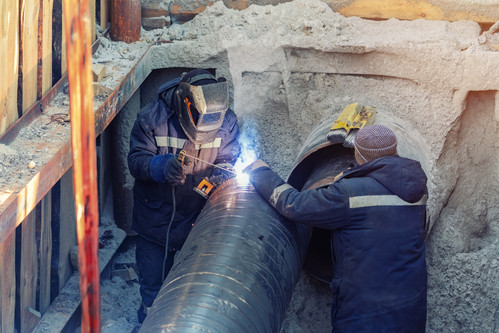How to Choose a Welding Helmet
Many factors come into play when choosing a welding helmet. The phrase “one size fits all” rarely applies in these situations, so it’s best to learn about the different types of helmets and welding goggles used in the industry. From occasional hobbyists to experienced professionals, use this guide to find the right welding safety equipment for the task at hand.
Single Fixed vs. Variable Shade Lens
There are generally two types of welding helmets: those with single, fixed lenses and those with variable shade lenses. Both come with a viewing lens with an ultraviolet (UV) and infrared (IR) filter to protect the user from the intensity of the light produced during the arc welding process.
Single shade helmets typically come with a #10 shade. The lens will not change during the welding process. Most users will keep the helmet upright and away from their faces until they have the torch in position, otherwise, they may have trouble seeing what they’re doing. They will then flip the helmet down over their face before they begin welding. However, this may prove difficult for some individuals, especially if they are inexperienced or working in a confined space.
Variable shade helmets will automatically adjust their brightness based on their surroundings. In normal working conditions, the lens will have a #3 or #4 shade, which is about as dark as a pair of sunglasses. This gives the user the chance to put the torch in place while wearing the helmet. The lens will then auto-darken to a #9 or #10 shade when the user begins welding.
Switching Speed
It’s also best to consider the switching speed when shopping for helmets with variable speed lenses. These helmets will auto-darken at different speeds, usually ranging anywhere between 1/3,600 to 1/25,000 of a second. Some users may experience eye fatigue as the lens darkens and brightens throughout the day. Generally, the faster the switching speed, the easier it is to see when switching between different tasks. Professional welders tend to prefer a faster switching speed for better visibility.
Power Supply
Welding helmets use different kinds of batteries to keep a charge in the field. Solar-powered helmets are easy to reuse but often require direct sunlight to charge properly. This may be difficult for some facilities and individuals. Lithium battery-powered helmets will hold a charge, but these can be costly to replace. That’s why many professionals prefer AAA battery-powered helmets. Use rechargeable AAA batteries for less charging hassle.
Weight and Fit
The helmet should also fit comfortably on the person’s neck and face. Choose the right size of helmet for a better, more secure fit. Lighter helmets tend to cost more, but they reduce pressure on the neck and shoulders. It’s best to go with a lighter helmet when welding for long periods.
Wearing the right kind of safety gear reduces the risk of workplace accidents and injuries. Contact the professionals at PK Safety to learn more about our different welding goggles and helmets.
SHOP WELDING SAFETY PROTECTION
Recent Posts
-
Customizing Gas Detectors: Tailoring Solutions to Fit Your Unique Requirements
In today’s diverse industrial landscape, a one-size-fits-all approach to safety simply doesn’t cu …Jul 3rd 2024 -
10 Ways to Prevent Wildfires
You can prevent wildfires by extinguishing flames before you leave the worksite. Avoid practicing …Jul 1st 2024 -
ANSI/ISEA 138 Safety Gloves: Ensuring Hand Protection
The human hand is an anatomical masterpiece and arguably the greatest tool attached to our bodies …Jun 25th 2024





